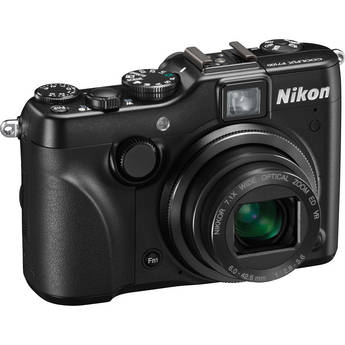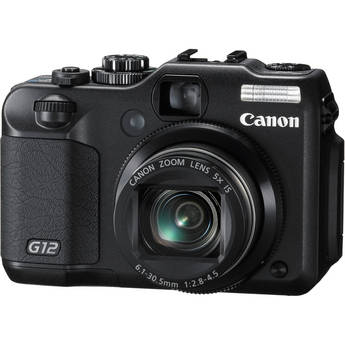Canon PowerShot G12 Digital Camera $379.95 |
 |
Panasonic Lumix DMC-LX5 Digital Camera $369.95 |
 |
Fujifilm X10 Digital Camera $599.95 |
 |
Nikon COOLPIX P7100 Digital Camera $499.95 |
The best answer I’ve ever heard to “The Camera Question” came from Joanna Pinneo, a former colleague of mine. Joanna is an outstanding photographer who has worked for Newsweek and National Geographic. Joanna had just shown an audience some of her photographs when a little old lady asked, “If I had a camera like yours would I take better pictures?”
“Probably not,” Joanna said, “you will take the best photos with a camera that is easy for you to use. When you see something you want to photograph, the less you think about the camera, the better your picture will be.”
Joanna pointed out that professional photographers are so familiar with their cameras that using them is second nature, like driving a car. She told the little lady that unless she planned to study photography, she should find a simple camera and then concentrate on the subject of the photograph she wanted to take.
She was right, of course. Most of your best photographs are taken to capture a moment. You’ll miss the moment if you are switching lenses, fidgeting with a flash, or trying to remember how your camera works. By the time everything is set just right, the shot is gone, and the moment has passed.
On the other hand, if you have a point-and-shoot camera, you can just (pardon this) you can just point-and-shoot and capture the moment. You’ll take a better picture precisely because you did NOT have a “better” camera.
Not long ago, I was photographing the keynote speaker at an event in Atlanta. Beside me was Ambassador Andrew Young with his point-and-shoot camera. He was photographing the speaker as well. Later, he showed me his shot, and it was pretty good.
This was not the only time I’d seen him taking pictures. I’ve worked with him on several occasions, once I asked him about his photography. He reached into his pocket and pulled out the small point-and-shoot camera. He said he always carried it with him and loved to take pictures and share them with his friends.
Then Ambassador Young laughed. He told me he even pulled it out of his pocket at his daughter’s wedding. He was officiating the wedding, but he still took a photo during the ceremony at the altar.
My good friend Dave Black, who shoots for Sports Illustrated, used one for a job. One of the most outstanding qualities of these point-and-shoots is they make no noise. They are so entire that manufacturers have put a speaker in them and created a clicking noise you can turn on or off to let you know when the shutter fires.
PGA rules will not allow a picture to be taken of a professional golfer during their backswing since the noise might distract the golfer. However, Tiger Woods’s caddy Steve Williams had thrown a few cameras into lakes when people fired away during Tiger’s backswing.
When Dave Black showed the editor from Sports Illustrated at the event the photos of Phil Mickelson in his backswing, you can understand why the editor started to quiver and gasp for air. Dave pulled out the little camera and made a picture or two of the editor. When the editor found that he couldn’t even hear the little quiet camera, he began to breathe normally again.
No one had any photos of golfers in their backswing before Dave, so Sports Illustrated ran the photos big made with a bit of point-and-shoot.
Today’s cameras are so much better than before. Take, for example, the point-and-shoot Nikon P7100.
Another camera similar to the Nikon P7100 is the Panasonic Lumix DMC-LX5. It is equipped with a Leica lens and is similarly priced to the Nikon P7100. Canon G12 and the Fuji X10 are similar as well. All of these cameras shoot JPEGs and RAW. They also all have missing controls for many of the other point-and-shoot cameras.
Joanna Pinneo said it so well when she said, “You will take the best photos with a camera that is easy for you to use.”
Guess the adage is true after all. I’ll paraphrase: It would be Stupid, not just to Keep It Simple.

